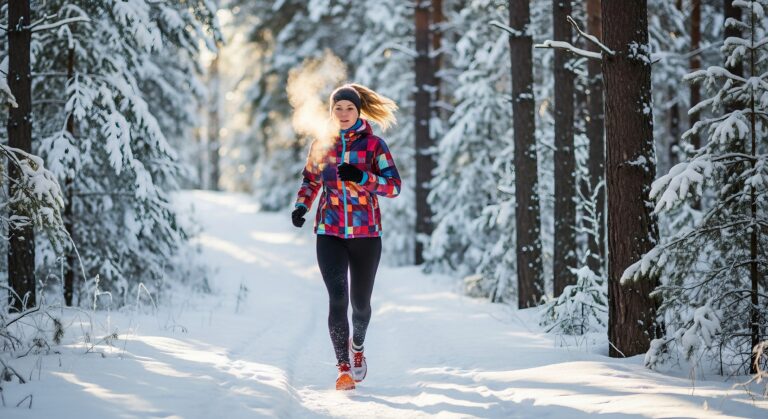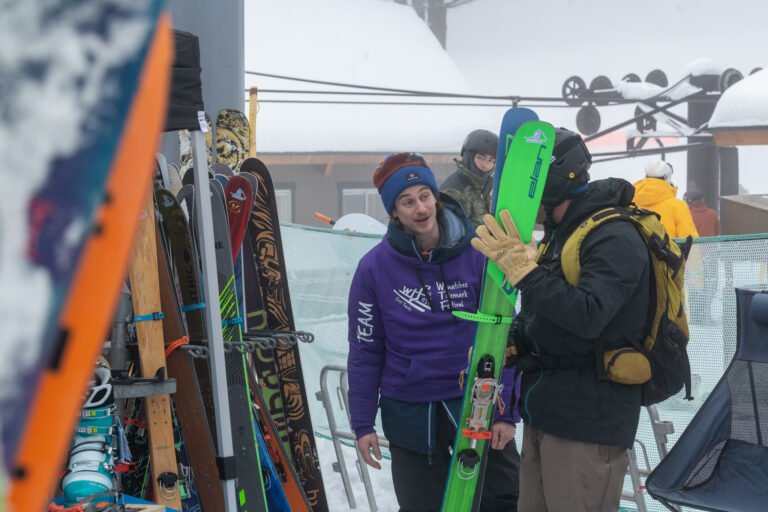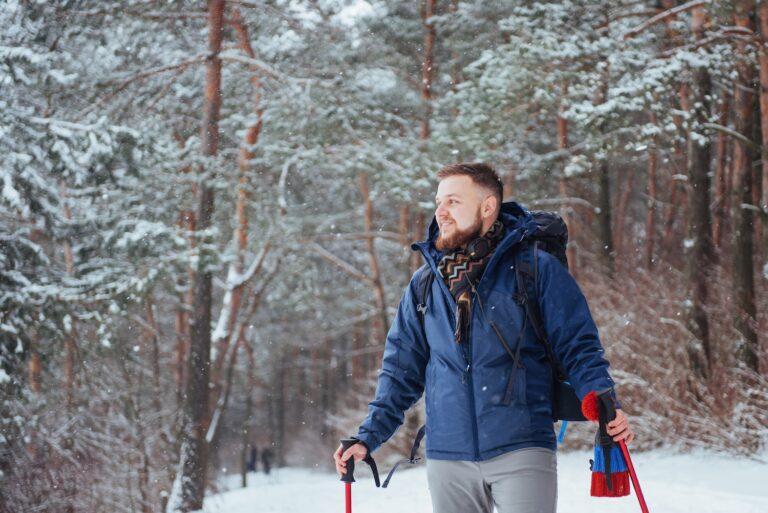Downhill snow sports demand a lot from the body: stamina, balance, leg and core strength, concentration. By the end of the season’s first day of skiing or snowboarding, cheeks are chapped and hair is wind-whipped, legs are burning, and bodies are happily exhausted. Cross-training with yoga can help you to have a stronger, more flexible, and (hopefully) injury-free season on the mountain.
One of the main ways yoga helps skiers and snowboarders is by “keeping your legs conditioned,” says Mimi Vimont, who owns Beyoutiful Hot Yoga’s multiple Spokane and Wenatchee locations along with her husband, Wes. The entire Vimont family, parents and children, spend many of their free winter moments at Silver Mountain (they also love heading to White Pass), where they ski and snowboard. Their six and three-year-olds are big fans of the bunny hill; the one-year-old isn’t quite up on skis—yet.
Yoga, of course, is great for increasing flexibility and keeping the body loose. “Skiers are used to being so tense,” Vimont says. She remembers how her husband, a contractor and longtime skier, couldn’t sit on his knees until he’d begun practicing yoga. Seeing that transformation in him has “been kind of fun,” she says.
“If you’re more flexible, I think you have a lot more leeway in movement in your skiing,” she adds. The flexibility and balance help if and when you lose your footing. A strong and flexible body makes it more likely that “you’re not tensing up when falling,” Vimont says. As she puts it, you’ll be “more loosey-goosey.”
Leg strength and core strength, both of which are frequently called upon in a yoga practice, are essential to any snowboarder or skier. Yoga helps not only to build these muscles, but to strengthen the entire body, including the little stabilizer muscles that are often overlooked, and that protect joints and the spine. Another benefit for snowboarders and skiers is the way it encourages and increases focus—a helpful skill whether you’re trying to stay on your feet while hurtling down a mountain or keep your balance in Tree Pose (or avoid getting distracted during a long meeting at work).
Practicing yoga first thing gives snow bunnies the chance to get “loose and warm” before they hit the slopes, Vimont says; either try a home practice, or sign up for a class. Some studios open quite early and can accommodate a pre-ski day session. It can also be beneficial to cap off a ski or snowboarding day with evening yoga to wind down and stretch the many muscles that have spent the day tensed.
And remember, regardless of whether you can regularly make it to an official class, yoga has an unbeatable convenience factor. All it truly requires is time, some basic knowledge, and, possibly, a yoga mat. A yoga practice (even if yours is just an occasional handful of postures) is just as doable on the road—or the base of the ski hill—as at a yoga studio. The Vimonts typically warm up at the mountain, boots on, going through a series of stretches and forward folds before hopping on the chair lift.
If you want to give yoga a try, sign up for a class at a local studio, or ease in gradually at home by checking out a video online. One good resource is Yoga with Adriene, which offers a gentle approach for all levels of experience: www.yogawithadriene.com. When looking into classes, Vimont recommends hot yoga (the norm for Beyoutiful’s studios) and yin yoga, which is a slow-paced style of yoga that emphasizes relaxing in restorative postures.
However you incorporate yoga into your winter sports season, it will be good for both your mind and body. //
Yoga Poses for Skiers & Snowboarders
Beyoutiful Hot Yoga owner Mimi Vimont recommends the following yoga poses to help get skiers and snowboarders ready for this season.
- Chair Pose and Warrior Poses (for leg strengthening)
- Eagle Pose (for joint flexibility)
- Tree Pose and Dancer Pose (for balance)
- Boat Pose (for core strength) //
Sarah Hauge lives in Spokane with her husband and two daughters. She wrote the Run Wild column in the September issue.













